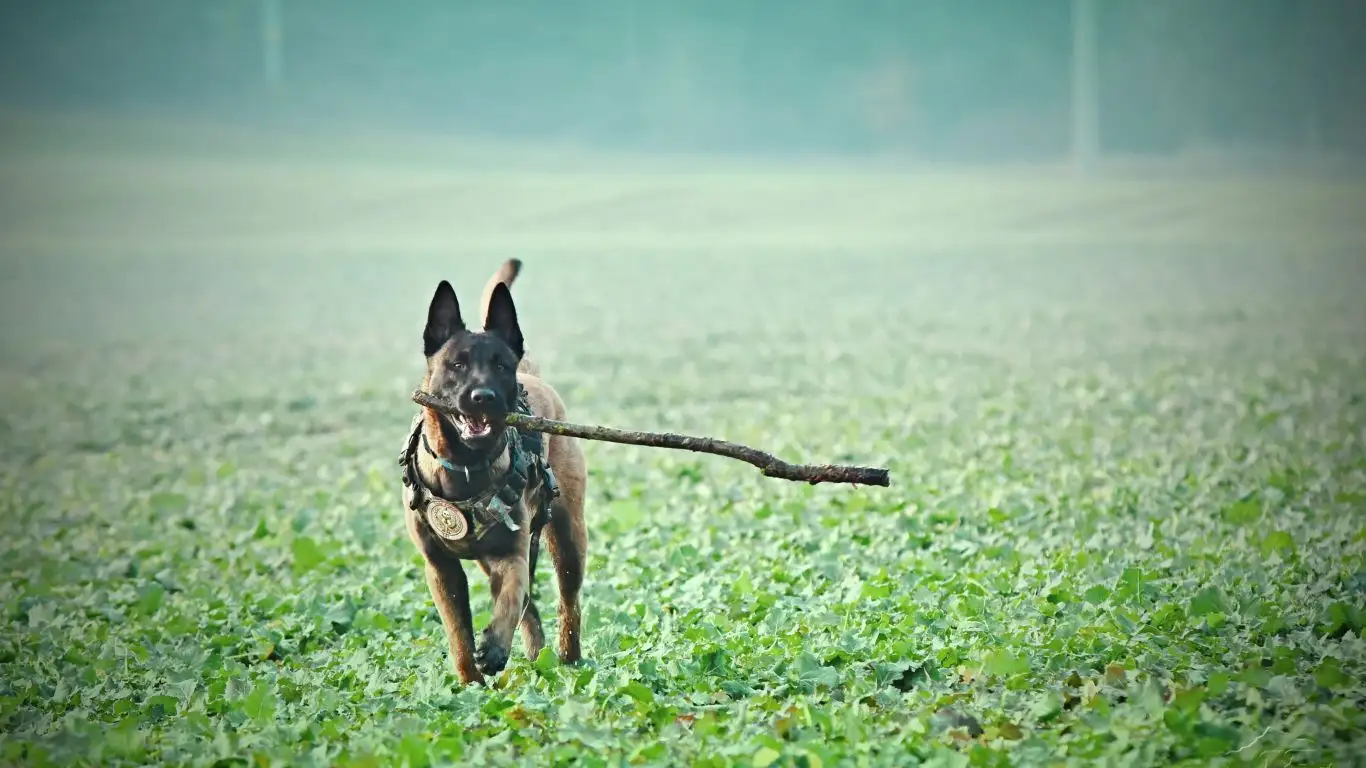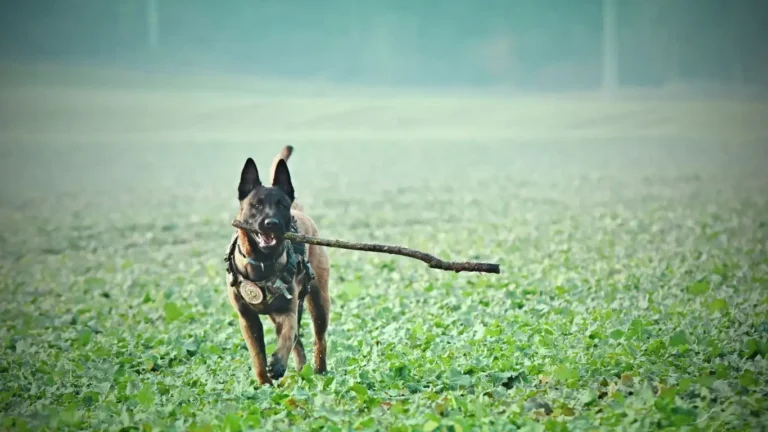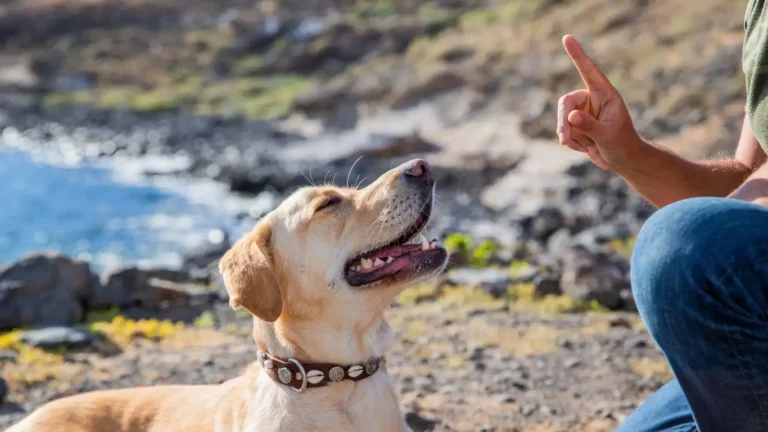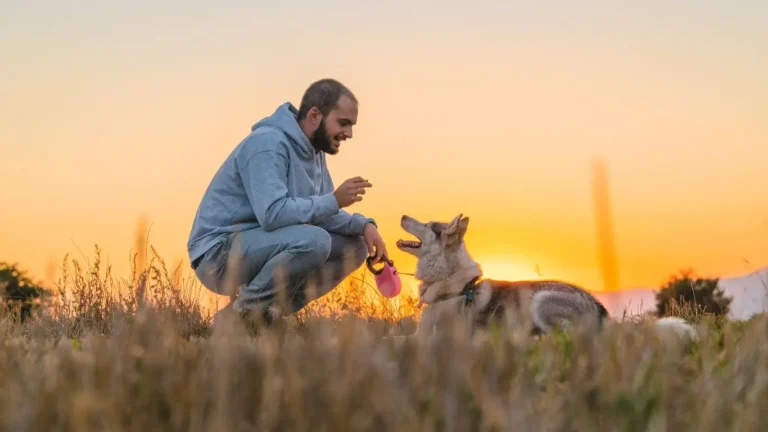Easy Guide: How to Train a Dog to Walk Up and Down Stairs Safely
Teaching your dog how to train a dog to walk up and down stairs safely might seem like a simple task, but trust me, as a Certified Professional Dog Trainer (CPDT-KA), I’ve seen plenty of pups struggle with those steps! Some hesitate at the bottom like they’re facing Mount Everest, while others bound up and down recklessly, risking injury. Whether your furry friend is nervous or too enthusiastic, getting them comfortable with stairs takes patience, the right techniques, and a good dose of positive reinforcement.
Why Some Dogs Struggle With Stairs
Before we jump into the training, it’s important to understand why your dog might be hesitant or struggling:
- Puppies & Young Dogs: Many young dogs have never encountered stairs before. The strange gaps between steps and the change in elevation can be confusing.
- Small Breeds: Tiny dogs, like Chihuahuas or Dachshunds, often find stairs intimidating because of their size.
- Senior Dogs: Older dogs may have joint issues like arthritis, making stairs uncomfortable or even painful.
- Rescue Dogs: If your pup was never exposed to stairs in their previous environment, they might be scared or simply not understand what to do.
- Past Trauma: A dog who has slipped or fallen on stairs before may associate them with danger.
Setting Up for Stair Training Success
Before you even begin training, take a few steps (pun intended!) to make the process easier for your dog.
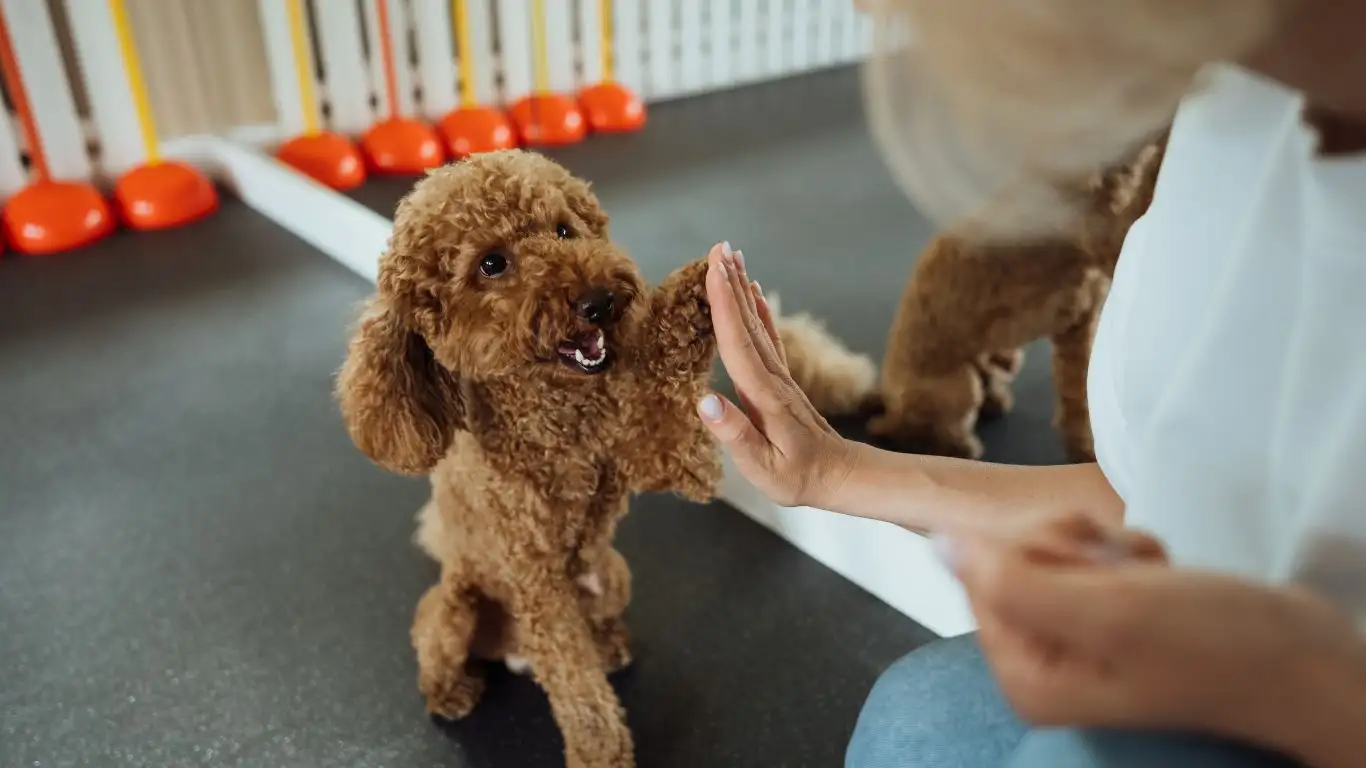
Choose the Right Stairs
If possible, start on a staircase that is:
- Short (3-4 steps) to make the learning process less intimidating.
- Carpeted or has non-slip treads to prevent slipping.
- In a quiet environment with minimal distractions.
Gather Essential Training Tools
You don’t need a ton of equipment, but having a few key items will help:
- High-value treats: Small, tasty rewards to motivate your pup.
- A leash: For gentle guidance, not for pulling.
- Patience & encouragement: Your dog will pick up on your energy—stay positive!
Safety First: Preventing Accidents
Just like humans, dogs can get injured on stairs. A few safety precautions:
- Use baby gates to block stair access until training is complete.
- Make sure your dog is calm before attempting training—avoid practicing when they’re overly excited.
- Never force a frightened dog up the stairs; this can create lasting fear.
How to Train a Dog to Walk Up and Down Stairs Safely
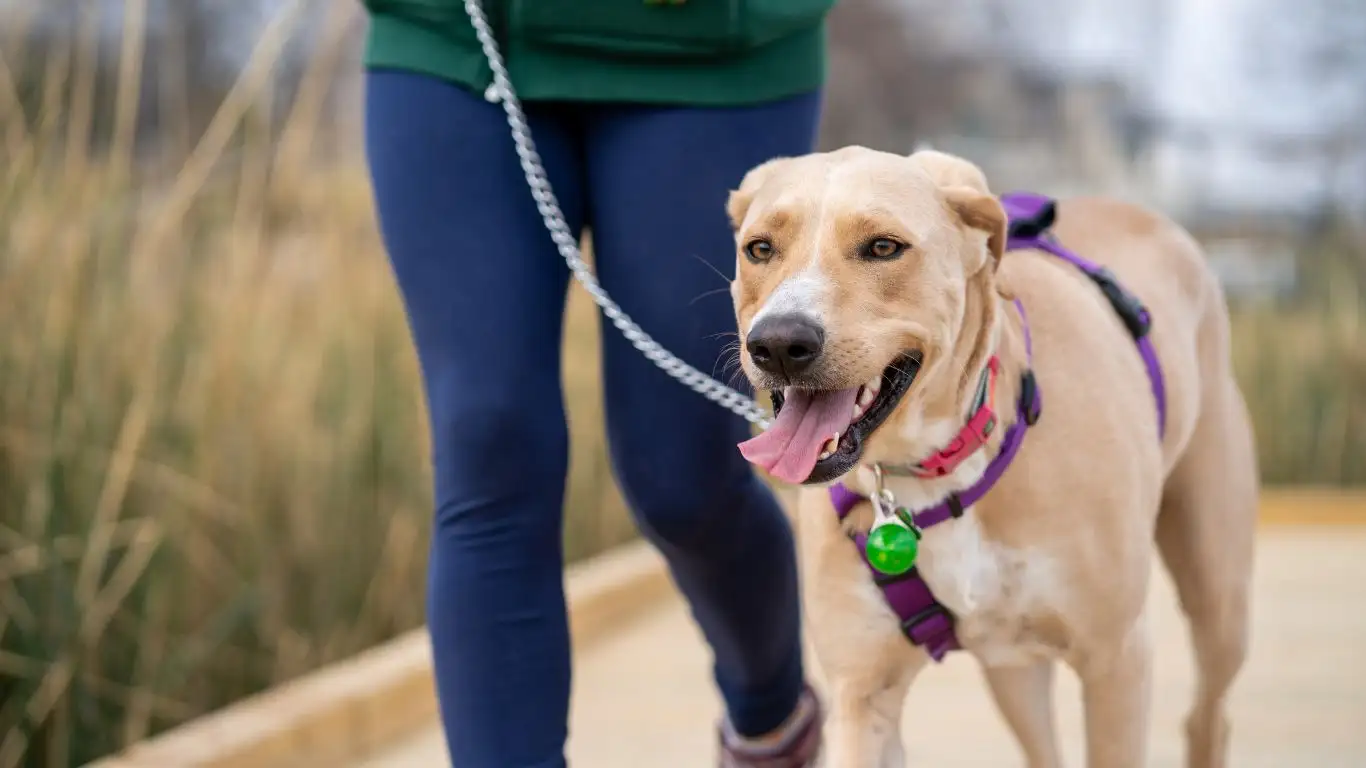
Step 1: Introduce the Stairs Slowly
Start by letting your dog explore the base of the stairs. Encourage them to sniff around and get familiar with the area. If they seem nervous, sit beside them and offer gentle praise.
Step 2: Lure with Treats
Hold a treat just one step ahead and encourage your dog to take that first step. If they hesitate, give them time—don’t rush it! Once they step up, reward them immediately.
Step 3: One Step at a Time
After your dog successfully takes the first step, move up another step and repeat the process. Keep sessions short and positive, allowing them to build confidence at their own pace.
Step 4: Practice Going Down
Descending stairs is often scarier for dogs than going up. Use the same technique—one step at a time with plenty of encouragement. If needed, guide them gently with a leash.
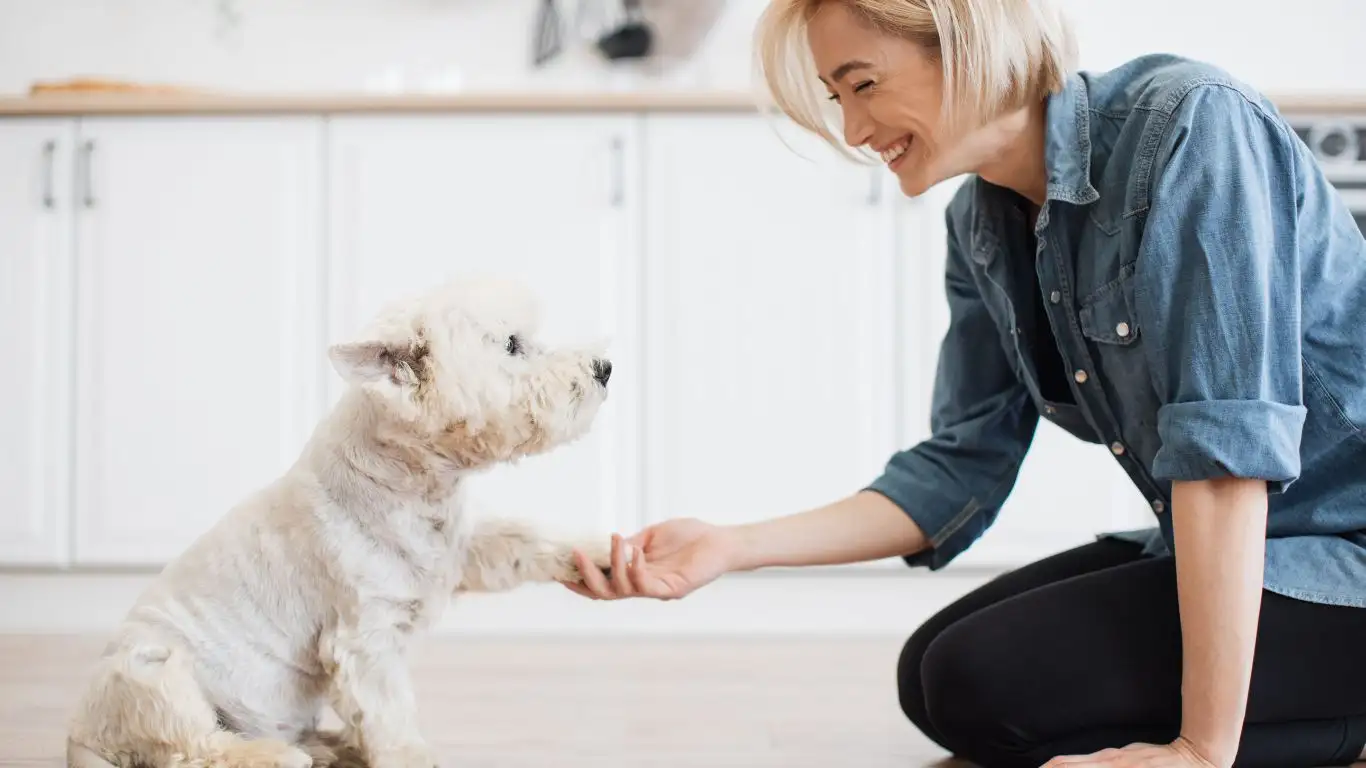
Step 5: Gradually Increase Difficulty
Once your dog masters a few steps, try a longer staircase. Maintain a slow, steady approach and always reinforce with praise and treats.
Building Confidence: Helping Your Dog Feel Secure on Stairs
Now that your dog is getting the hang of stairs, it’s time to focus on building their confidence. Some dogs master stair climbing quickly, while others take a bit more reassurance. If your pup still seems hesitant, don’t worry—I’ve had plenty of clients with dogs who needed extra time to feel secure.
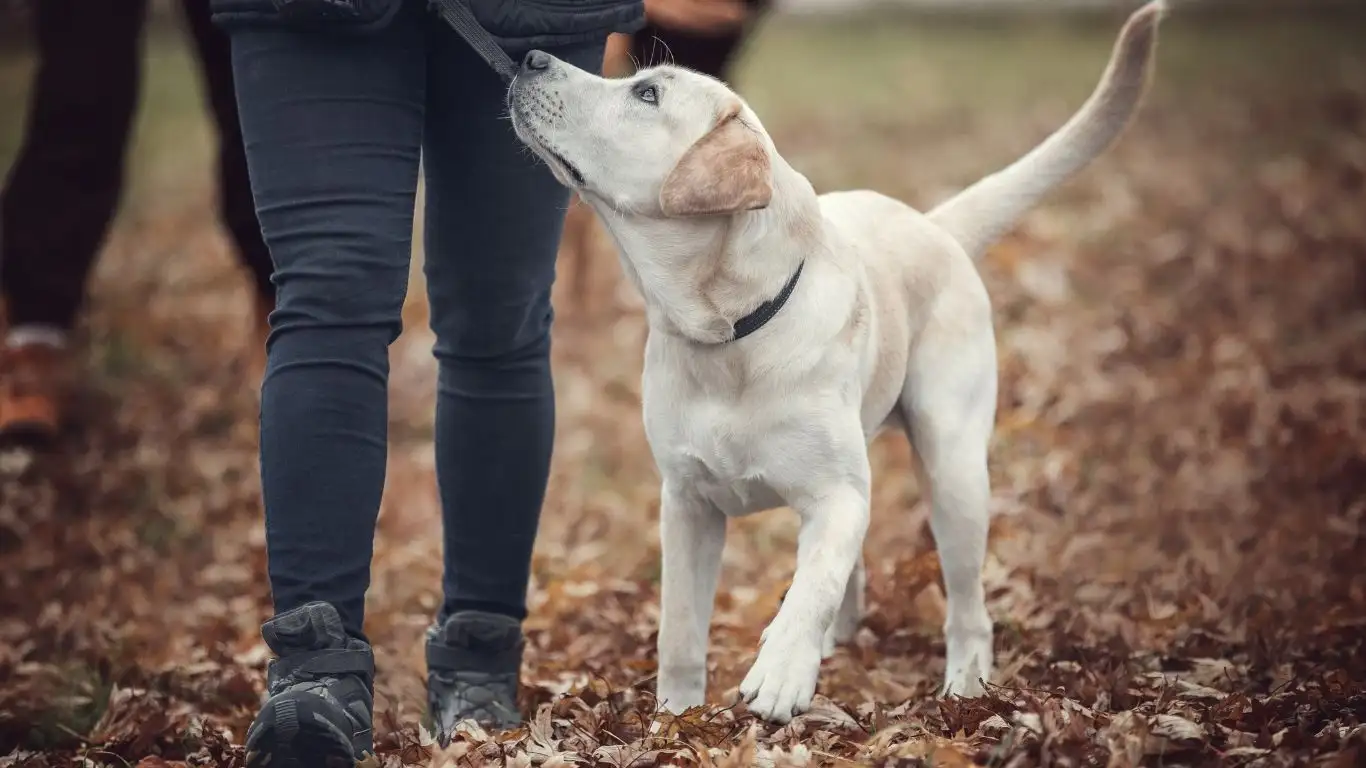
Encouragement and Praise Matter
One thing I always emphasize to my clients is that dogs thrive on positive reinforcement. The more excited and happy you are about their progress, the more eager they’ll be to keep trying. Every small step they take—literally and figuratively—deserves a cheerful “Good job!” and maybe even a belly rub.
Gradual Exposure Works Best
For particularly timid dogs, I like to break things down into tiny steps. If they’re afraid of a full flight of stairs, I stick to just one or two steps for a while. Sometimes, I’ll even sit on the stairs with them, giving treats and praise just for being near them. This slow exposure helps remove the intimidation factor.
Use a Training Buddy
Dogs learn by watching, and a confident dog can be a fantastic teacher. If you have another dog in your household who’s already comfortable with stairs, let them demonstrate! Many dogs will follow a friend up and down, gaining courage in the process.
Common Challenges & How to Overcome Them
Every dog is different, and you might run into some unique hurdles while training. Here are some common issues I’ve seen and how to handle them.
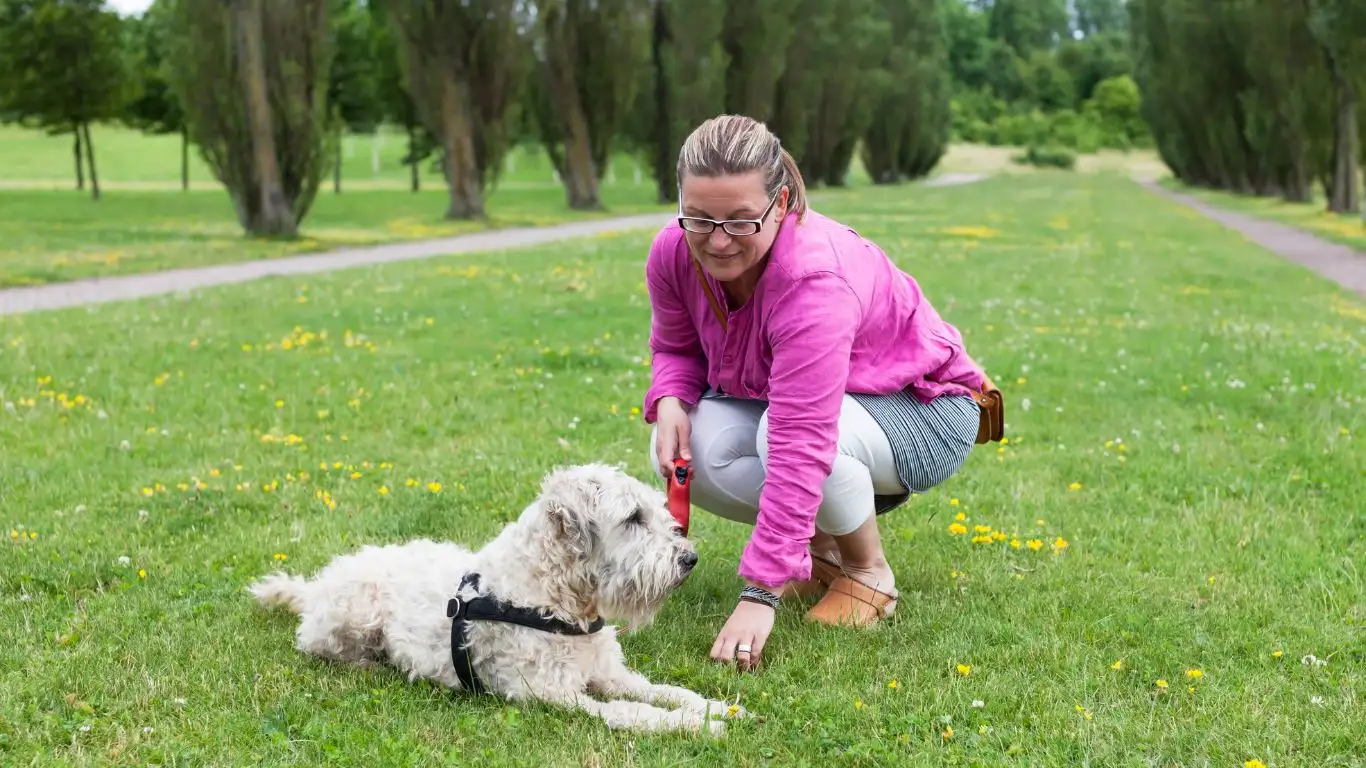
Fear of Slipping
One of the biggest concerns for dogs—especially those who’ve had a slip in the past—is traction. Hardwood or tile stairs can feel like an ice rink to them. If your stairs are slippery, adding non-slip stair treads or a runner can make a huge difference. I’ve had clients tell me their dogs went from terrified to confident just by adding a little grip!
Jumping Multiple Steps at a Time
On the other end of the spectrum, some dogs get a little too confident. If your pup is skipping steps or leaping down in bursts, they could be at risk of injury. To slow them down, I recommend guiding them with a leash and reinforcing a steady pace. Teaching a “wait” or “easy” command on the stairs can also help.
Only Going Up, But Not Down
This one is surprisingly common! Many dogs find going up easier than coming down. If your dog gets stuck at the top, don’t panic. Go back to the basics: use treats, encourage them gently, and if needed, guide them with a leash. If they’re small, you can even carry them down a few times to show them it’s safe.
Refusing to Use Stairs at All
If your dog absolutely refuses to even try, don’t force it. Go back to step one—let them explore at their own pace. Sometimes, placing their favorite toy or bedding near the stairs can make the area feel more familiar and less intimidating.
Practicing in Different Locations
Once your dog is confident with the stairs at home, it’s a great idea to practice in different environments. Stairs in a park, at a friend’s house, or even at a pet-friendly store might look different and feel unfamiliar. The more places they practice, the more adaptable they’ll become.
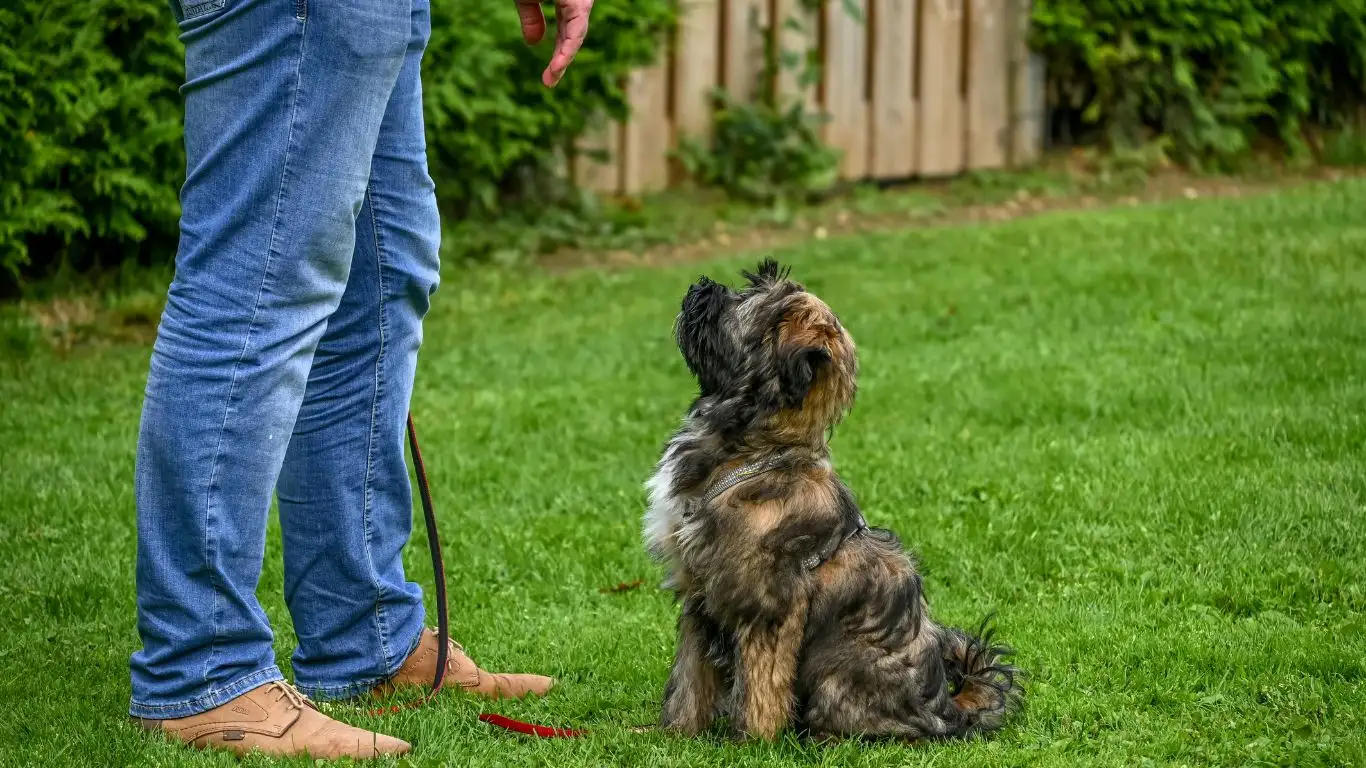
Introducing Outdoor Stairs
Outdoor stairs, especially those made of metal or concrete, can be trickier for dogs. They often have gaps between the steps, which can be unsettling. Start slow, use the same encouragement techniques, and always ensure their paws are comfortable—hot metal stairs in summer or icy stairs in winter can be a hazard.
Using Different Textures
Stairs come in all sorts of materials: carpeted, wooden, stone, metal. Practicing on a variety of surfaces helps your dog gain confidence in any situation. If they’re used to plush carpeted stairs but hesitate on slick wooden ones, spend some extra time helping them adjust.
Adding Distractions
At home, training is easy in a controlled environment. But what happens when a loud noise startles your pup halfway up the stairs? To prepare for real-world scenarios, introduce mild distractions. Play a bit of background noise or have someone walk by while your dog is on the stairs. The goal is to ensure they stay focused and don’t panic.
Advanced Stair Training: Strengthening Skills & Long-Term Success
By now, your dog should be feeling a lot more comfortable on the stairs. But training doesn’t stop at just getting them up and down safely—it’s also about making sure they navigate stairs with confidence, control, and good habits. Let’s talk about how to reinforce their skills, prevent bad behaviors, and ensure their safety long-term.
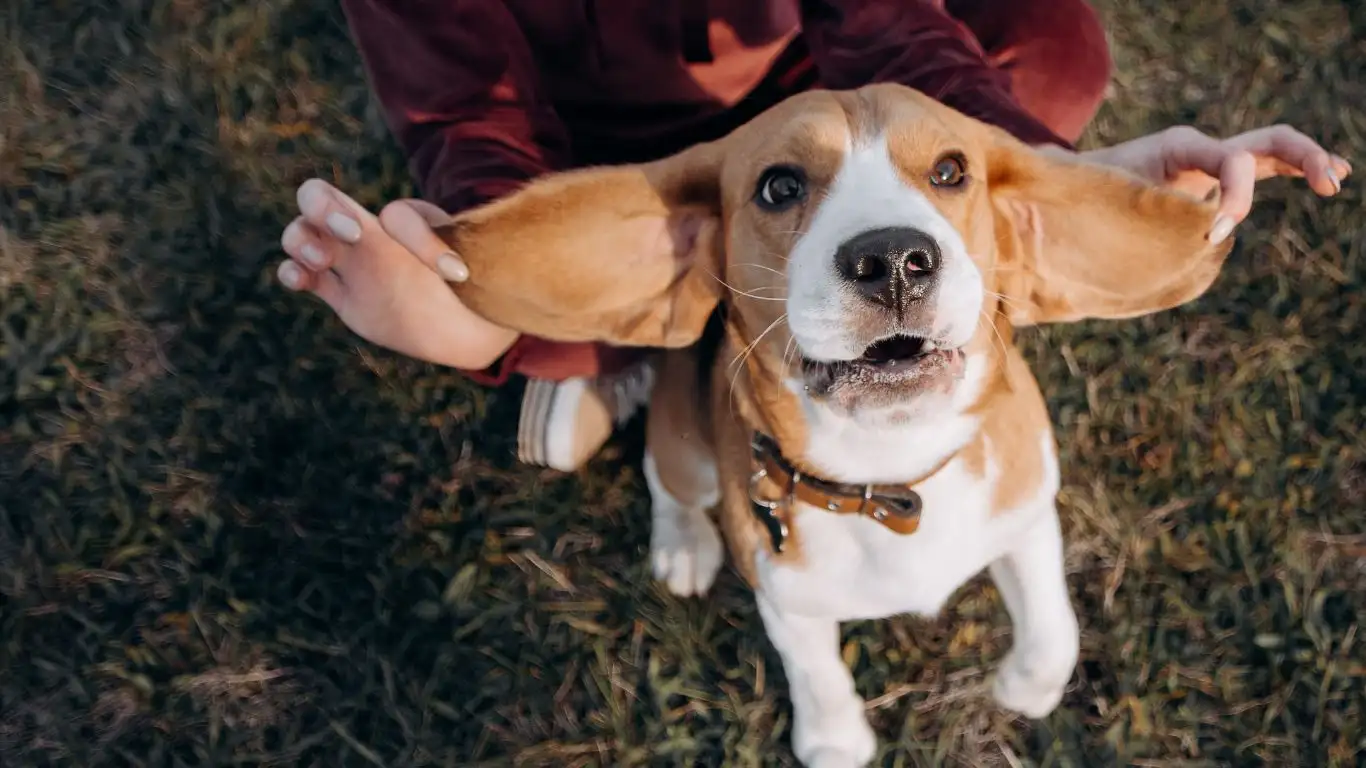
Reinforcing Good Stair Etiquette
Once your dog has mastered the basics, it’s important to keep practicing so they don’t develop bad habits, like racing up too fast or hesitating at the top. I always tell my clients that consistency is key—if you let them rush one day and then scold them for it the next, they’ll get confused.
- Keep using rewards: Even after they’ve learned, occasional treats and praise help reinforce their confidence.
- Practice daily: Regularly using the stairs in a controlled manner prevents backsliding.
- Maintain a slow, steady pace: Dogs that bolt down the stairs can easily trip. Encourage a calm, measured descent.
Teaching a “Wait” or “Slow” Command
One of my favorite ways to make stairs safer is teaching a simple “wait” or “slow” command. This is especially useful for dogs that tend to zoom ahead without thinking. To train this:
- Hold your dog on a leash at the top of the stairs.
- Say “wait” and hold them in place for a second or two.
- Give a release cue like “okay” and allow them to move forward.
- Gradually increase the wait time before allowing them to go down.
With consistency, your dog will learn to pause before dashing down, making stair use much safer for both of you.
Special Considerations for Different Dogs
Not all dogs will approach stairs the same way. Depending on their breed, size, and physical condition, some may need a little extra help.
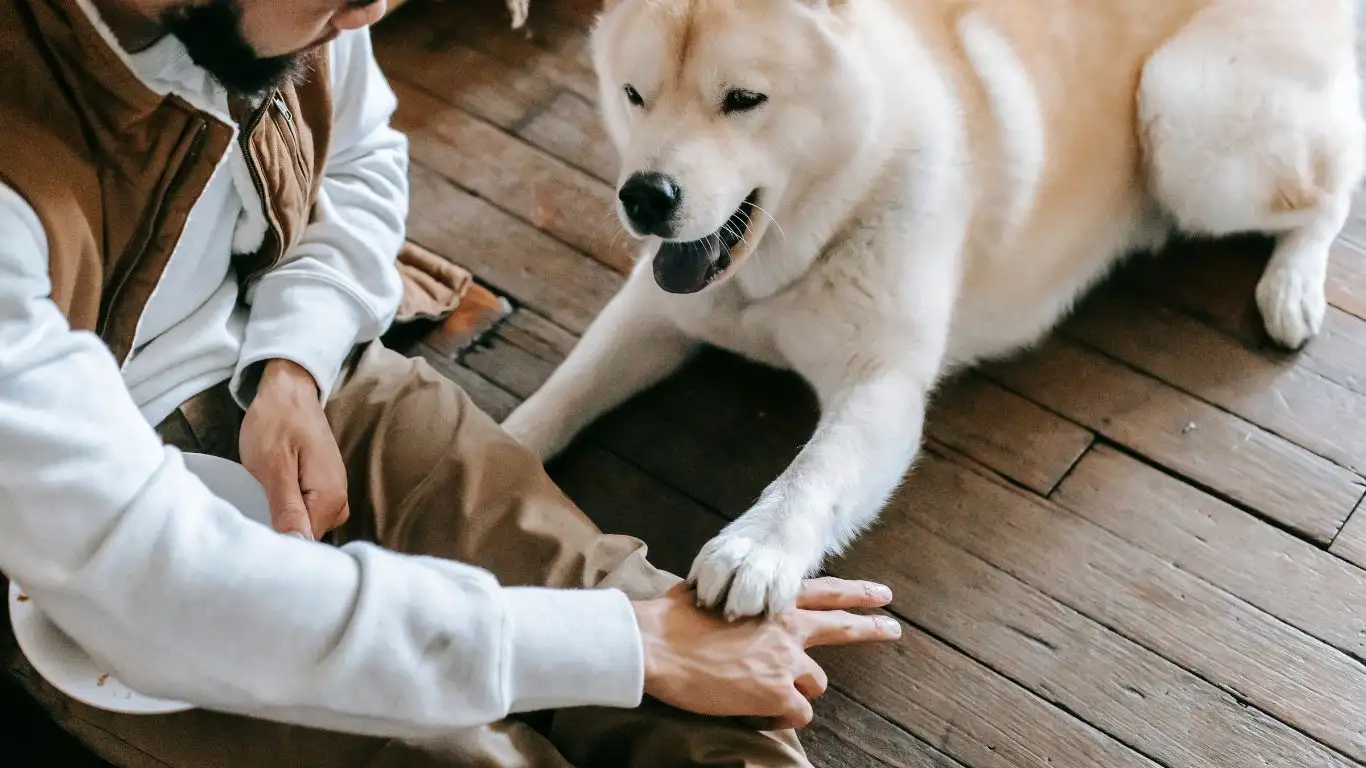
Senior Dogs & Mobility Issues
Older dogs often struggle with stairs due to arthritis or joint pain. If your senior pup is showing signs of difficulty, consider these adjustments:
- Use a ramp: A dog ramp can be a great alternative for homes with a lot of stairs.
- Add traction: Non-slip stair treads or rugs can prevent slips.
- Support with a harness: A mobility harness with a handle allows you to gently assist them.
Small Dogs & Puppies
For tiny breeds, stairs can feel like an obstacle course. To make things easier:
- Start with smaller steps, like a single step or a curb.
- Provide positive reinforcement and extra patience.
- Use your hands to guide them, but avoid carrying them too much—they need to learn independence.
Dogs with Anxiety
For particularly nervous pups, stair training can take longer. If your dog is struggling:
- Break sessions into tiny steps—literally.
- Practice on different types of stairs at their pace.
- Consider consulting a professional trainer if fear persists.
Final Tips for Stair Safety
Even after your dog is fully trained, stair safety should always be a priority. Here are a few final things to keep in mind:
- Keep stairs well-lit: Poor lighting can make it difficult for your dog to see where they’re stepping.
- Watch out for clutter: Shoes, toys, or other objects on stairs can be tripping hazards.
- Monitor changes in mobility: If your dog suddenly struggles with stairs, it could indicate a health issue. A vet check-up may be needed.
Frequently Asked Questions
How long does it take to train a dog to use stairs?
It depends on the dog! Some pick it up in a few days, while others may take weeks. Consistency and patience are the biggest factors in success.
Is it okay to carry my small dog up and down the stairs?
Occasionally, yes—but try not to make it a habit. Dogs need to learn how to navigate stairs on their own for safety and independence.
What should I do if my dog suddenly refuses to use the stairs?
If they were fine before but suddenly stop, check for injuries, vision problems, or joint pain. A vet visit may be necessary.
References
- WebMD – Dog Health & Mobility
- AKC – Training Tips for Different Breeds
- ASPCA – Safety Considerations for Senior Dogs
Disclaimer
The information in this article is based on my experience as a CPDT-KA certified trainer. However, every dog is different, and training results may vary. If your dog has severe anxiety, mobility issues, or medical concerns, always consult a veterinarian or professional trainer before proceeding.
